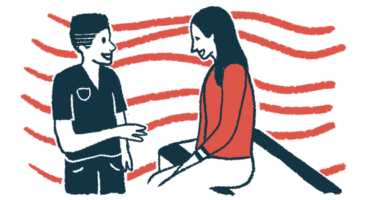Soliris or Ultomiris may help reduce use of healthcare resources in aHUS
Drop in insurance claims seen for patients starting either therapy

People with atypical hemolytic uremic syndrome (aHUS) who start treatment with Soliris (eculizumab) or Ultomiris (ravulizumab) — both marketed by Alexion — generally use fewer healthcare resources, according to a new U.S. study.
Indeed, rates of insurance claims for aHUS patients starting on either therapy dropped substantially in the ensuing months, data showed.
The findings also suggest that the disease tends to remain stable among patients who switch from Soliris to the newer Ultomiris, and that patients who make this switch generally have fewer healthcare visits and lower healthcare costs, not counting the cost of the medication itself.
The study, “Atypical Hemolytic Uremic Syndrome Treated With Ravulizumab or Eculizumab: A Claims-Based Evaluation of Healthcare Resource Utilization and Clinical Outcomes in the US,” was published in the journal Kidney Medicine. The work was funded by Alexion, now part of AstraZeneca, and headquartered in Boston and Zurich.
Less use of healthcare resources seen with both therapies
Soliris and Ultomiris are both approved in the U.S. to treat aHUS. The two therapies have virtually identical mechanisms of action, working to block the activation of the complement system — a part of the immune system that’s involved in the disease.
Ultomiris, granted approval in 2019, is designed to be more stable in the body, allowing for less frequent infusions compared with Soliris, which was approved in 2011. Patients on Ultomiris are administered that therapy every four or eight weeks, while those on Soliris are given infusions every two weeks.
Data from clinical trials have suggested that treatment with both of these medicines can help ease disease symptoms — blood clots in the body’s small blood vessels — and prevent complications like kidney damage. But real-world data on patient outcomes with Ultomiris are limited given its relatively recent approval.
Given that, a team led by scientists at Alexion now conducted an analysis of U.S. insurance claims data aiming to assess how these therapies affect patients’ use of healthcare resources.
The analysis included data on 248 people with aHUS who started treatment with Soliris, and nine patients who started therapy with Ultomiris.
Compared with the months before starting treatment, rates of insurance claims for procedures like dialysis and plasma exchange saw a substantial drop in the months afterward. Rates of insurance claims related to common complications of aHUS, such as high blood pressure or kidney failure, also decreased substantially after patients started treatment.
The analysis also covered 65 patients who initially started treatment with Soliris, but then switched to Ultomiris after the more long-lasting therapy became available.
Among these patients, rates of claims for aHUS-related medical procedures were generally low in the months before switching, which the researchers said is probably because the disease was generally well-controlled with Soliris. Rates of these claims remained low in the first months after they started treatment with Ultomiris, suggesting continued disease stabilization.
Rates of claims of aHUS-related complications were generally low on Soliris, but still tended to decrease slightly after patients switched to Ultomiris.
In our study, there were few treatment-switch patients with claims for aHUS-related clinical procedures at all time points, potentially due to disease stabilization during [Soliris] treatment prior to switching treatment to [Ultomiris], and there were fewer healthcare facility and home visits and lower medical costs.
Healthcare costs, not counting with the cost of the medications themselves, also generally decreased after patients switched from Soliris to Ultomiris, as did the rates of healthcare visits at facilities or in patients’ homes, which researchers said likely is due to less frequent infusions.
“In our study, there were few treatment-switch patients with claims for aHUS-related clinical procedures at all time points, potentially due to disease stabilization during [Soliris] treatment prior to switching treatment to [Ultomiris], and there were fewer healthcare facility and home visits and lower medical costs,” the researchers wrote, noting that this result “adds to a growing body of evidence demonstrating the potential benefits of [Ultomiris] treatment for patients with aHUS.”
Scientists stressed that this study is limited by the relatively small number of patients with available data. Giving those limitations, these analyses had limited ability to detect statistically significant differences and the researchers were mostly noting trends.
They also emphasized that insurance claims data is always an imperfect representation of clinical realities.
“As such, although the patterns in claims of clinical manifestations provide some indication of the outcomes for these patients, caution should be taken in linking these findings to treatment effectiveness,” they wrote.







